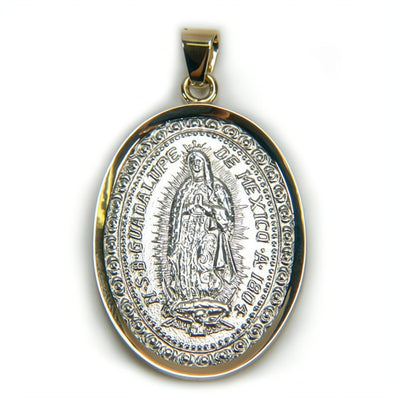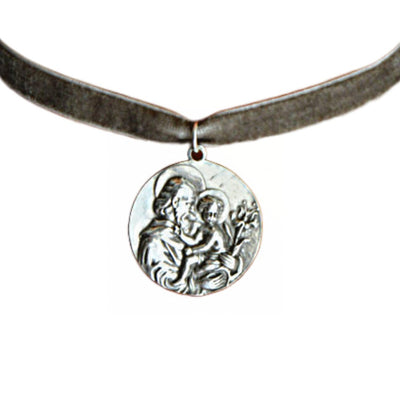The Catholic Reformation: A Movement of Renewal and Resilience
Introduction
The Catholic Reformation, also known as the Counter-Reformation, was a pivotal movement within the Catholic Church that sought to renew spiritual life, reinforce core doctrines, and address internal challenges in response to the Protestant Reformation. This period, from the mid-16th to the early 17th century, was not merely a reaction to the emergence of Protestantism but an intentional effort to restore integrity, discipline, and devotion within the Catholic faith. It saw the reaffirmation of sacred traditions, the revival of religious orders, and a profound influence on Catholic art, music, and missionary expansion.
At the heart of the Catholic Reformation were significant reforms that shaped the modern Catholic Church. The Council of Trent, convened between 1545 and 1563, established vital theological clarifications and spiritual reforms that remain influential today. Saints like St. Ignatius of Loyola, St. Teresa of Ávila, and St. Charles Borromeo dedicated their lives to spiritual renewal and education, reinforcing a deeper connection between faith and daily life. Meanwhile, sacred art and music flourished, reflecting the era’s emphasis on inspiration, piety, and devotion.
In this article, we will explore the origins, key figures, artistic influence, and global impact of the Catholic Reformation, shedding light on how this monumental movement continues to shape Catholic tradition and devotion today.
The Spark of Renewal: Early Efforts and the Council of Trent
Internal Reformers and the Call for Change
Even before Martin Luther’s 95 Theses in 1517, many within the Catholic Church recognized the need for spiritual renewal and institutional reform. Various church leaders, theologians, and religious orders had been working to address internal weaknesses, including the lack of proper clergy education, moral laxity, and the need for a greater emphasis on piety and devotion.
One of the earliest efforts at renewal came from Cardinal Ximenes de Cisneros, who sought to reform the Spanish clergy by emphasizing priestly education and biblical scholarship. The Oratory of Divine Love, founded in Italy, encouraged laypeople and clergy to cultivate a more profound sense of personal holiness and charitable service. These movements, though small, laid the groundwork for the broader reforms that the entire Church would later embrace.
The Council of Trent: A Defining Moment
In response to the challenges posed by the Protestant Reformation, Pope Paul III convened the Council of Trent (1545–1563), a historic gathering of Church leaders tasked with clarifying Catholic doctrine, reinforcing discipline, and enacting reforms to combat corruption and strengthen faith among the clergy and laity alike. The Council's seven sacraments emphasized the necessity of Sacred Tradition alongside Scripture and denounced the Protestant concept of justification by faith alone.
The Council aimed to standardize and purify Catholic practices, leading to reforms such as:
-
The establishment of seminaries to properly educate priests.
-
The reaffirmation of the Eucharist as the Real Presence of Christ.
-
The promotion of sacred art and music to inspire devotion.
-
The reinforcement of the importance of relics, saints, and Marian devotion.
The outcomes of the Council of Trent played a critical role in revitalizing the Catholic Church and remain fundamental to Catholic doctrine and practice today.
Key Figures and Movements of the Catholic Reformation
St. Ignatius of Loyola and the Jesuits
One of the most influential figures of the Catholic Reformation was St. Ignatius of Loyola, a former Spanish soldier who underwent a dramatic conversion and founded the Society of Jesus (Jesuits) in 1540. The Jesuits became an intellectual and spiritual powerhouse, deeply involved in education, missionary work, and theological debates to strengthen the Catholic faith.
Jesuit schools and universities became central to Catholic intellectual life, ensuring clergy and laypeople were well-versed in Church teachings. Additionally, Jesuit missionaries traveled to Asia, the Americas, and Africa, spreading Catholicism and engaging with new cultures while maintaining fidelity to the faith.
St. Teresa of Ávila: The Carmelite Reformer
A towering figure in Catholic spirituality, St. Teresa of Ávila was a Carmelite nun, mystic, and writer who played a key role in reforming religious life. Her efforts led to the foundation of the Discalced Carmelites, an order devoted to prayer, contemplation, and a return to simplicity.
Her writings, including The Interior Castle and The Way of Perfection, remain spiritual classics that inspire countless Catholics today. She emphasized a deep, personal relationship with God through prayer and self-discipline, helping to cultivate a renewed emphasis on personal holiness.
St. Charles Borromeo: A Model of Pastoral Reform
As Archbishop of Milan, St. Charles Borromeo was instrumental in implementing the Council of Trent reforms. He championed the creation of seminaries, provided direct pastoral care, and set high moral standards for the clergy. His work transformed the priesthood, ensuring that education, discipline, and devotion remained central to the Catholic faith.
Art and the Catholic Reformation
Sacred Art and the Rise of the Baroque Style
One of the most enduring legacies of the Catholic Reformation was its impact on sacred art and architecture. The Church commissioned some of history’s greatest masterpieces, emphasizing grandeur, emotion, and divine inspiration.
The Baroque artistic movement emerged as a response to Protestant iconoclasm, reinforcing the Catholic belief in the importance of visual beauty in drawing souls closer to God. The works of Caravaggio, Rubens, and Bernini exemplify this era with their dramatic chiaroscuro lighting, lifelike figures, and dynamic compositions.
The Role of Sacred Music
The Catholic Reformation also revitalized liturgical music, with composers such as Palestrina, Monteverdi, and Victoria creating breathtaking choral works emphasizing worship and devotion. The emphasis on polyphonic music in the Mass helped elevate the sacred experience, deepening the faithful's emotional and spiritual connection to the Eucharist.
The Global Impact of the Catholic Reformation
Missionary Expansion
The Catholic Reformation sparked one of the most significant missionary movements in history. Jesuit, Franciscan, and Dominican missionaries spread the faith to the Americas, Asia, and Africa, establishing churches, schools, and hospitals.
In the New World, figures like St. Francis Xavier brought Catholicism to India. At the same time, missionaries in Latin America helped shape the deeply Catholic identity of nations such as Mexico, Peru, and Brazil.
Conclusion
The Catholic Reformation was a defining era that reshaped the Catholic Church, solidified its teachings, and reinforced the importance of personal holiness, education, and sacred art. The impact of this movement remains evident in modern Catholic practices, from the beauty of liturgical celebrations to the enduring influence of saints and religious orders.
At Guadalupe Gifts, we honor this legacy by offering faith-inspired jewelry, art, and devotional items that reflect the beauty and traditions of the Catholic faith. Visit Guadalupe Gifts to explore unique, handcrafted items celebrating the Church's rich heritage.




















Leave a comment